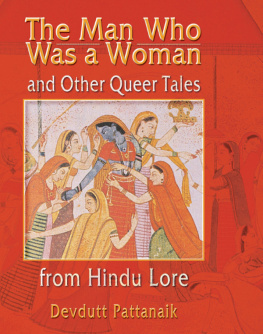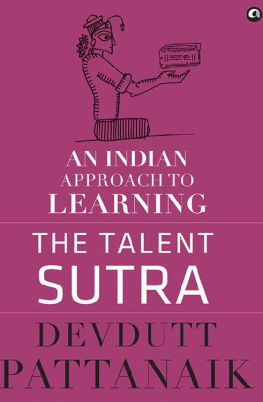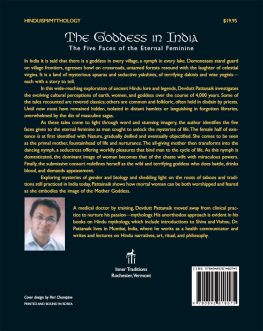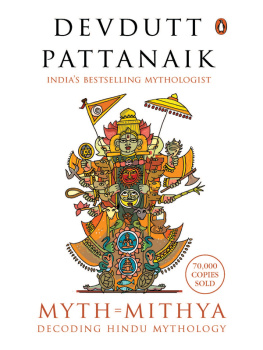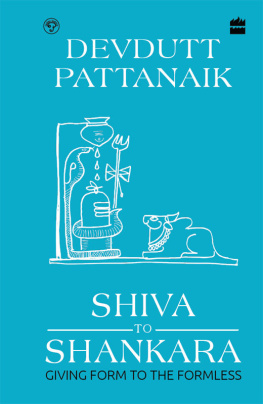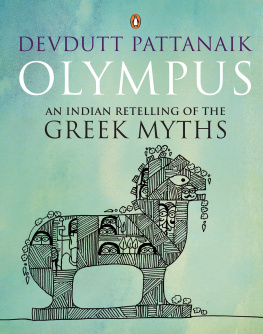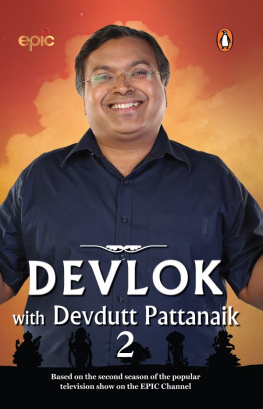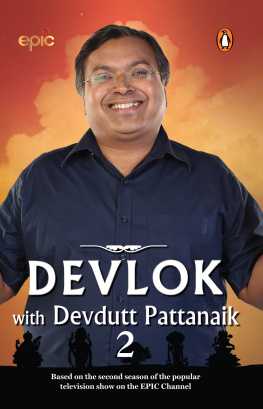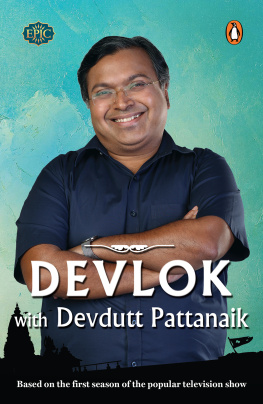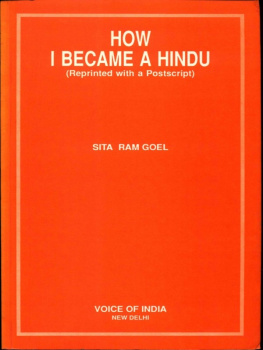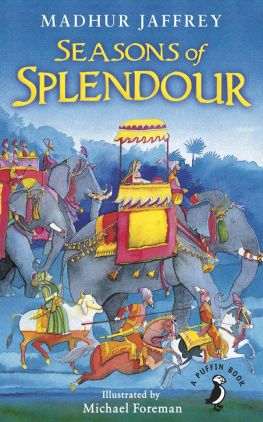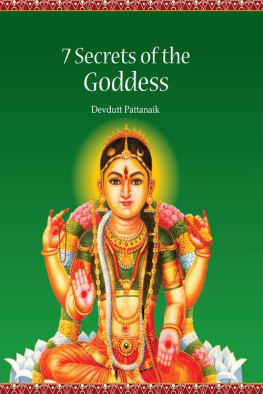The Man Who Was a Woman and Other Queer Tales from Hindu Lore
The Man Who Was a Woman and Other Queer Tales from Hindu Lore
Devdutt Pattanaik

First published by
Harrington Park Press, an imprint of The Haworth Press, Inc., 10 Alice Street, Binghamton, NY 13904-1580
This edition published 2012 by Routledge
Routledge
Taylor & Francis Group
711 Third Avenue
New York, NY 10017
Routledge
Taylor & Francis Group
2 Park Square, Milton Park
Abingdon, Oxon OX14 4RN
2002 by The Haworth Press, Inc. All rights reserved. No part of this work may be reproduced or utilized in any form or by any means, electronic or mechanical, including photocopying, microfilm, and recording, or by any information storage and retrieval system, without permission in writing from the publisher.
Cover design by Marylouise E. Doyle.
The cover is a twentieth-century calendar reprint of a medieval Pahari painting (c. 1800 C.E .) showing Krishna, the most perfect earthly incarnation of the divine, letting his female companions adorn him as a woman. This was part of Krishnas leela, divine game, played during his stay in Gokula, the village of cowherds and milkmaids. On one hand it can be seen as an endearing submission of the beloved to the whims of his lovers during the festival of colors, Holi, when convention is abandoned and the eroticism of nature celebrated with the coming of spring. On another, it can be interpreted as an enactment of a thought Krishna expresses later in life in the Bhagavad Gita: The body is nothing but a garment of the soul, worn afresh at birth and discarded at death. Woman or man, in apparel, biology, or behavior, the divine within remains unaffected and unruffled, awaiting discovery by all.
Library of Congress Cataloging-in-Publication Data
The man who was a woman and other queer tales of Hindu lore / [compiled by] Devdutt Pattanaik.
p. cm.
Includes bibliographical references and index.
ISBN 1-56023-180-7 (hard : alk. paper)ISBN 1-56023-181-5 (soft: alk. paper)
1. Sex roleReligious aspectsHinduism. 2. HinduismDoctrines. 3. TransvestismReligious aspectsHinduism. 4. Hindu literatureHistory and criticism. I. Pattanaik, Devdutt.
BL1215.S49 M36 2001
294.513dc21
2001016663
For everyone who believes in possibilities and choices
About the Author
Dr. Devdutt Pattanaik, MBBS, graduated in medicine from Grant Medical College, Mumbai, and went on to specialize in the field of medical writing and health communication. With a passion for mythology, he topped the Mumbai University course in comparative mythology (PGDCM) and has published four books on the subject: Shiva: An Introduction; Vishnu: An Introduction; Devi: An Introduction; and Goddess in India: Five Faces of the Eternal Feminine. Hanuman: An Introduction and Mysteries of Hindu Mythology are forthcoming.
Dr. Pattanaik is part of Sabrang, a cultural organization that demystifies the arts, and has lectured extensively on the relevance of mythology to modern man. His articles have been published in the Times of India Speaking Tree. His essay Threshold of Chastity can be found in the Spring 2000 issue of Parabola [www.parabola.org].
Dr. Pattanaik lives in India.
CONTENTS
Every culture has sacred narratives that capture its worldview. Among them, one occasionally finds stories that seem to rupture the traditional discourse. This book compiles such subversive stories related to sex and gender from Hindu lore.
An attempt is made to explain the presence of such queer narratives within the grand religious canvas, keeping in mind the complex and ambiguous relationship between pleasure, fertility, and celibacy in the Hindu construct, the ritual and symbolic role of men and women, the existence of nonconventional gender constructs in traditional society, the generally disdainful response to them by the Hindu bourgeoisie, and the increasingly expressive queer and L/G/B/T movements in modern India.
Further, this book aims to demonstrate that there is no timeless and universal attitude toward things queer. Different cultures express and repress sexuality in different ways in different times. In doing so, the book makes a case against the quest for a normal and natural Utopia where there is one reality, one logic, one law, one worldview, and one way of life.
Devdutt Pattanaik
I would like to thank the following for their help in making this book a reality:
- My parents, for supporting this book and enduring my creative pangs
- Nimu, for enriching and empowering my life
- Ashok, who clarified why maya means delusion, not illusion, thus sparking off a series of ideas
- Barbara Lloyd, for giving me permission to use the photo of the Jogappa from her book Colours of Southern India, published by Thames and Hudson
- Dolf Hartsuiker, for giving me permission to use the photo of the Sakhi from his book Sadhus, published by Thames and Hudson
- Aniruddha, for letting me use the photograph he clicked at Khajuraho, Madhya Pradesh
- Rajiv and Sachin, for digging out relevant information from the Internet
- Quentin, for his valuable insights after reading the preface
- Ramki, for throwing light on terminologies related to queer studies
- Nikita, for introducing me to postmodern vocabulary
- Lakshmi, for giving me access to lesser-known Tamil temple lore
- The scholars who have painstakingly compiled, translated, and analyzed Hindu lore that would otherwise have remained unheard
- That nameless person who once asked the question, What makes me human, being a man or being a woman?
A god transforms into a nymph and enchants another god. A king becomes pregnant. Another king has children who call him father, and mother. A hero turns into a eunuch and wears female apparel. A prince discovers on his wedding night that he is not a man. A princess has to turn into a man before she can avenge her humiliation. Widows of a king make love to conceive his child. Friends of the same sex end up marrying each other after one of them metamorphoses into a woman. These are some of the tales I came upon in my study of Hindu lore. They may be viewed as queer. Queer, because they break free from the binary heterosexual mold that dominates Hindu society.
In this book, I have compiled tales from Hindu lore that revolve around the theme of sexual transformation and gender metamorphosis. By sex, I mean biology. By gender, I mean social expression of that biology through apparel and mannerisms. Anatomy, apparel, and behavior are easier to identify in a narrative, leaving the underlying psychology open to all forms of interpretation. One can only speculate on the sexual orientation and gender identity of the characters, because in all these stories the narrative rarely dwells on desires and fantasies of the protagonist. Also, sexual attraction between characters is generally expressed in heterosexual terms: a man is never attracted to a man, until one of them becomes a woman.
The themes of sexual transformation and gender metamorphosis are not unique to Hindu lore. In Greek lore, for example, one comes upon the tale of the seer Teiresias who lived his life both as a man and as a woman. The story goes that once, on coming upon a pair of copulating
There is an Irish folklore of the handsome young abbot of Drimnagh who turned into a woman while resting on a mound. As a woman, he could not return to his wife. So he left his village, went to another village where he fell in love with a handsome young man, got married, had seven children, and lived the life of a housewife for seven years. In his eighth year as a woman, his family was invited to Drimnagh for the Easter feast. On the way, he took a nap. When he awoke, he had turned into a man once again. On one side stood his wife, on the other stood his husband and their seven children. What was he to do? The court came to his aid and gave him custody of three of his children. The abbot returned to his wife, but remained friends with his husband for the rest of his life. Though the protagonist of this tale is an abbot, the tale has nothing to do with Christianity. The tales pre-Christian origin is suggested when the people of the area accept the event as a trick of the mysterious little people or fairies who populate the Irish countryside.
Next page
